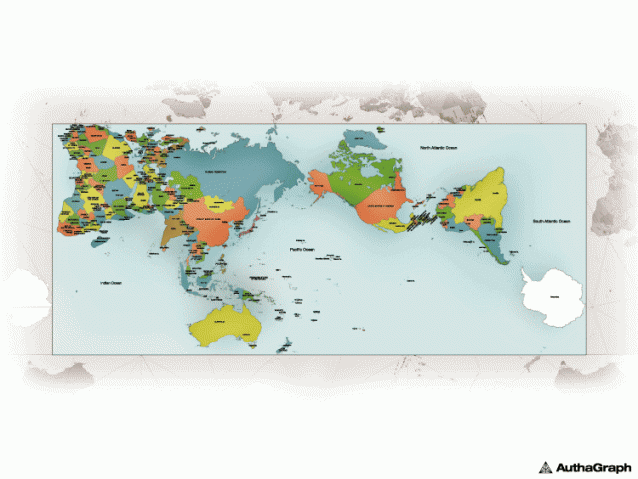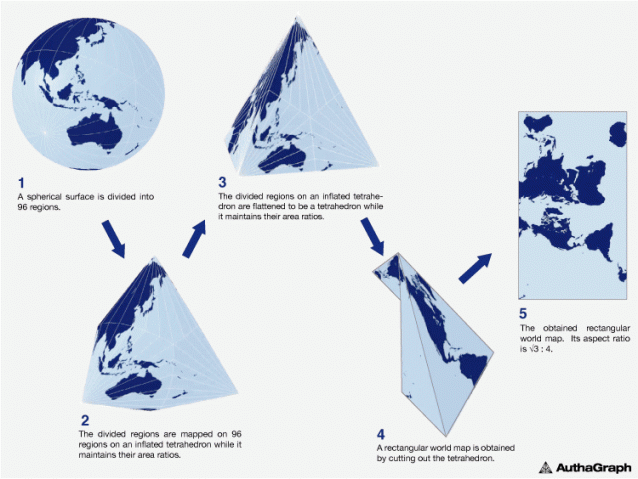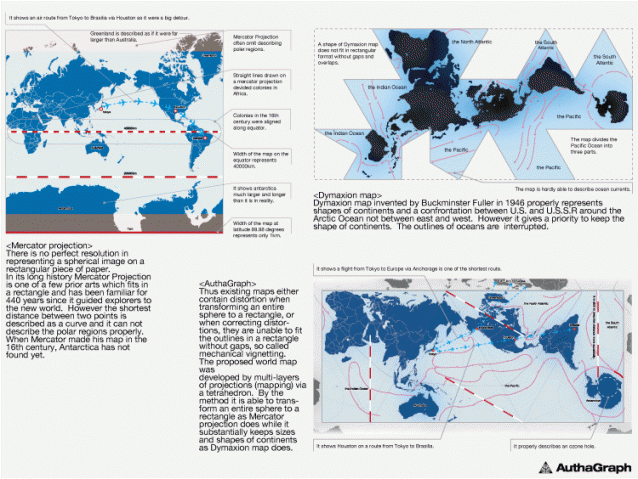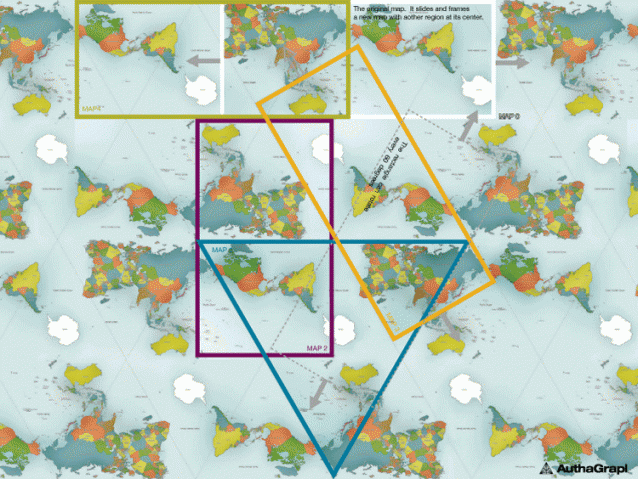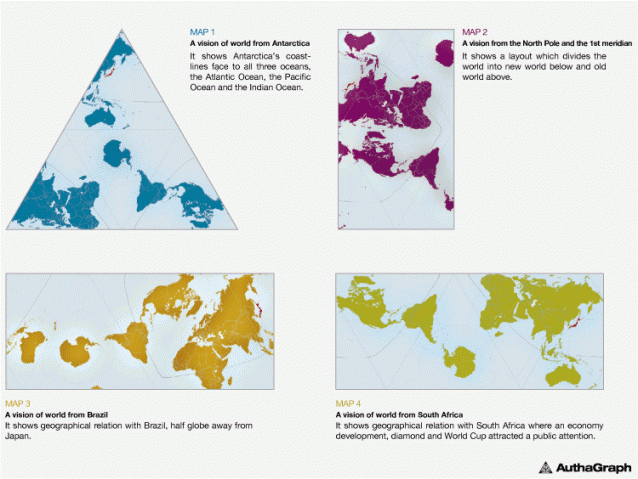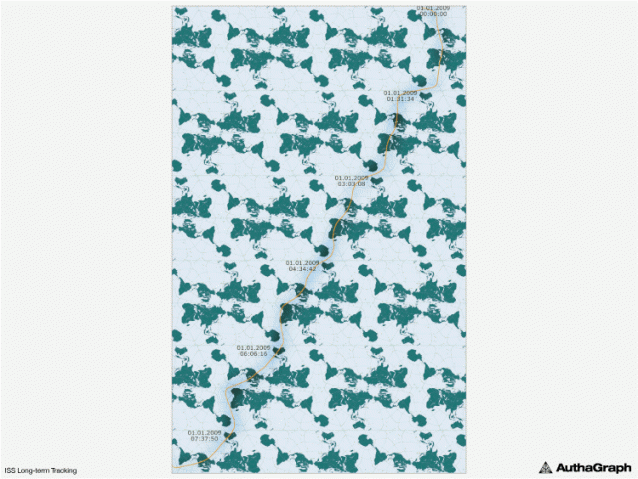AuthaGraph World Map
Antarctica was found in 1820 and the first man reaches the North Pole in 1909. In the 20th century the world tended to be framed by the East-West relations and the North-South problem. Our interest has been mainly on land since it has been our living environment. Meanwhile from the late 20th century the resources and environment problems have spread our interests over the polar regions and oceans such as, (1) Sea ice around the North pole representing the global warming, (2) Territorial sea claims for marine resources, (3) An ozone hole above the South Pole, (4) Melting glaciers in Greenland, a cause that may submerge Tuvalu, (5) El Nino in the ocean, a cause of an unusual weather that eventually influence to the economy on land. The AuthaGraphic world map aims to provide a new view point to perceive the world by equally showing these interests spread over the globe.
AuthaGraphic Projection
An original method for keeping areas' proportions is called "iso-area-mapping."
And an original mapping process by combining different projection methods via intermediate objects is called "multilayer-mapping." These ideas for mapping aims to reduce errors during projecting a sphere to a tetrahedron because a simple optical projection from a sphere to a tetrahedron causes huge distortions therefore useless.
Comparison/ Rectangle or Accuracy
AuthaGraph map is able to transform an entire sphere to a rectangle as Mercator projection does while it substantially keeps sizes of continents and oceans as Dymaxion map does.
the World without Ends
It is able to tile the AuthaGraphic world map without gaps and overlaps. The way of tessellation has seamless connections between maps as if it is an Escher’s tiling. Same as fishes and birds in his painting, six continents are not fragmented and seven oceans keep their continuous networks. It had been thought the world is on an infinite plane since geometries of a sphere and of an infinite plane are similar. Walking on both surfaces, we do not meet an end. A geographical network in the map is able to expand to any directions on the tessellated maps. Thus the world map reproduces the spherical world without dead end on a plane.
World Map Re-arrangements
On the tessellated maps it is able to frame a view field covering a full set of a world. The frame functions as a viewer which enables user to slide and rotate and then to frame a new world map with a preferable region at its center. They provide a new angle of perspective to equally view the world so as to be free from existing perceptions defined by usual phrases such as “far east”, “go up north”, “Western”.
ISS Long-term Tracking
An orange line on tessellation-world composed by 49 maps tracks a journey of International Space Station (ISS) for eight hours. Its coordinates are provided by ‘Cerestrak’, a website distributing ISS’s orbital data. NASA and the US department of defense issue the original data. The coordinates are defined by calculating the data to reflect corrections of the orbit.
It has past 140 years since ‘Around the World in Eighty Days’ (Verne) was published. Satellites fly across the world in hours while they play leading roles of telecommunication and remote sensing such as observing weather, environmental pollutions and natural resources. The tessellationworld map shows such rapid movement of a satellite in one line.

















